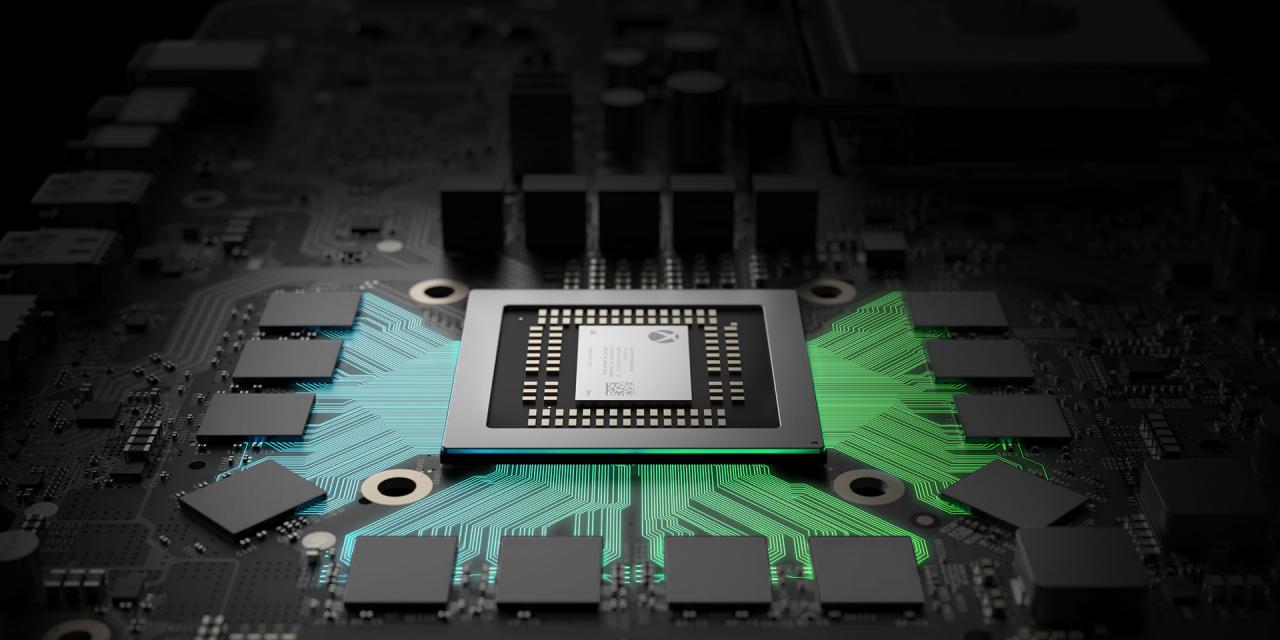
Microsoft is giving the Xbox One a major hardware upgrade with Project Scorpio when it releases later this year. Although we don't have the full details of what the system will be capable of, we do know its internal hardware makeup and can make real guesses on what its capabilities will be based on that.
Following on from the release of the Xbox One S last year, Scorpio is a much heftier upgrade. Although the S provided a slight boost to overall performance thanks to a GPU clock boost and added support for 4K video with the addition of a 4K UHD Blu-Ray player, Scorpio is in a whole different league.
CPU
Although the processor at the core of the Scorpio is much the same AMD x86 CPU as the original Xbox One, it has been overclocked to 2.3GHz, representing a near 31 percent increase in clock speed. That should equate to a sizeable bump in general computing performance and will act as a good backdrop for the rest of the hardware upgrades to provide them with all the instructions they need to really deliver the performance upgrade Scorpio promises.
Memory
While the original Xbox offered gamers 8GB of DDR3 memory - five gigabytes of which was usable by developers – and an extra 32MB of low-latency ESRAM built into the GPU, that all changes with Scorpio. Instead, Microsoft has opted for a unified memory system like Sony used in the PS4 and PS4 Pro. There will be 12GB of GDDR5 shared between the system and the graphics processor, offering 8GB to developers, which will equate to a near 50 percent increase in overall bandwidth.
Four gigabyte of the new memory will be used to run the operating system, which is a gigabyte more than the original Xbox One, but that's to help run the menu at 4K resolution by default.
Graphics/
The biggest change coming in Project Scorpio is with the GPU. Although it is still built on to the same die as the CPU thanks to AMD's APU design, the graphics chip is far more capable. It packs in 40 compute units, where the original Xbox One had only 12 and overclocks the core from 853 MHz (911Mhz on the Xbox One S) to a massive 1,172MHz, which is near unprecedented speed for a console.
The big increase in capabilities means that Project Scorpio will deliver as much as six teraflops of graphical performance, cementing original claims by Microsoft to that effect in early 2016.
To give you some context for that, it means that the Scorpio has as much graphical power as an AMD RX 480. While that might not seem like much, it's nearly five times as much as the original Xbox One and will mean running higher resolution and higher-detail games is easy and should lead to much prettier games in the future.
Storage
Although we don't know the brand name or the exact performance numbers to make it official, DigitalFoundry (https://www.eurogamer.net/articles/digitalfoundry-2017-project-scorpio-tech-revealed) claims that the included one terabyte hard drive is as much as 50 percent faster than its predecessor, which should mean much shorter load times and a quicker boot up for the console too.
Power
The power brick stays internal with Project Scorpio, with the entire system said to be powered by a 245w internal PSU. That should mean an equivalent power draw to the original Xbox One thanks to improvements in hardware efficiency.
Cooling
We're still waiting to hear more information about what the cooling setup is like within the Scorpio, but we do know it uses vapor chamber cooling. That means it uses a heatpipe-like heatsink design, with a new fan set up that pushes air out the rear of the console and is said to operate at the quieter end of the cooling spectrum.
Conclusion and capabilities
So what does this all mean for the Xbox One platform? It means that when Scorpio is released the Xbox One will very much feel like a last generation console. It will still be able to play all the new games that are released, but while Project Scorpio owners can enjoy their 4K media and gaming at 4k resolutions at solid 60 frames per second, the Xbox One will languish on sub-1080P resolutions, often locked at 30 FPS in comparison.
The Xbox One S will still remain relevant in some senses, as it will be able to deliver 4K media viewing through streaming platforms and its 4K Blu-Ray drive, but Project Scorpio is going to be a worthy upgrade for anyone who wants to be on the cutting edge of console gaming.
